Oaxaca parte tres

Natural diversity and rare sites for outdoor lovers
We had heard from friends that Oaxaca was known to be a paradise for mountain biking and while Hannah was itching to put on her hiking shoes, Michael who usually keeps in shape via daily bike rides to work, was really excited to get back into the saddle. It had been months since our last decent hike back in Mendocino, that is not counting the steamy but short hike to Tamul waterfall. In our four months in Mexico we had forgotten all about Alltrails, an app for finding hiking and biking trails that we usually use on a weekly basis, but which had proven almost pointless in Mexico. Not that there aren't any trails to be found, but those are usually unmarked donkey and cattle trails. And it's not that people don't walk a lot here, because they do, but it seems more of a necessity to get to the next market, rather than a pastime and a way to work off extra calories.
Luckily, while paying a visit to town we stumbled across a sign for a guided hiking tour that promised an enchanted forest nearby. Hannah was immediately hooked and started researching. There are a few websites that focus on hiking tours and paths around Oaxaca, which turned out to be a decent resource for information, such as Hoofing it in Oaxaca, and luckily a handful of outdoor aficionados in the area have been active enough on Alltrails to mark and rate a number of trails. After a quick search the Parque Ecotouristico La Cumbre Ixtepeji popped up and compared to other things that are technically marked as parks and hiking areas on Google, this one supposedly had real trails.
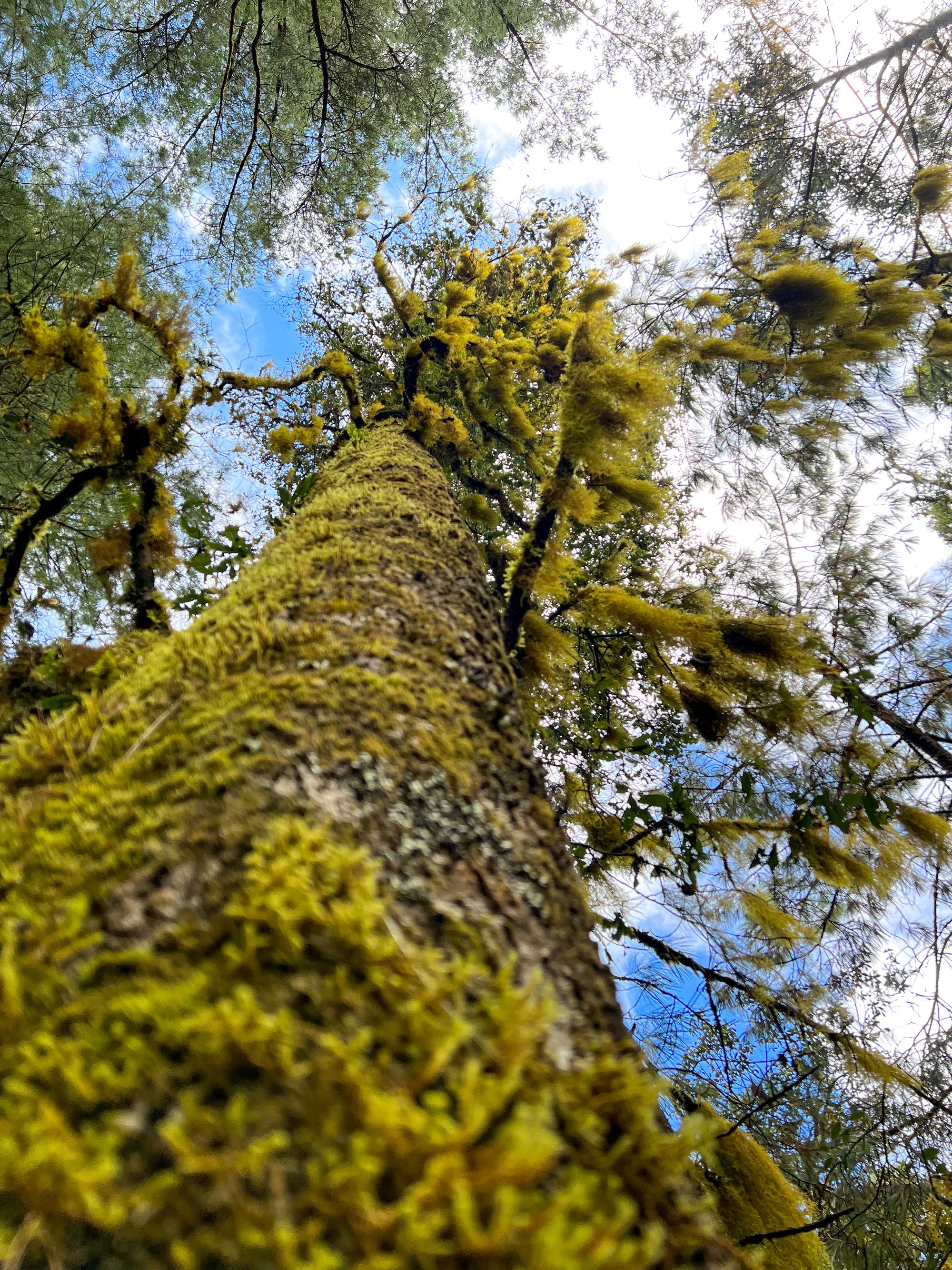
The enchanted forest of La Cumbre Ixtepeji
Super motivated to finally see some mossy woods again and get our sweat on, we made our way about an hours drive north of Oaxaca. The hike we chose was about 5.5 miles long and clearly marked on Alltrails. After paying a small entrance fee at the little corner store at the gateway to the park, we parked our car close to the trailhead and started walking. Never ever have either of us seen so much moss! It was a truly enchanted site. We also had a few encounters with a small family of cows that were grazing in the bushes of the dense forest. The cows were not particularly enchanted by Dasher's barking and we had to bushwhack a little bit around them to not provoke them further. With a good mix of flat and steep, starting at 9000+ feet, we had a decent elevation gain of roughly 1,555 feet where the trail gets surprisingly chilly and ends up at a beautiful viewpoint over the cloud forest. We also noted the trail was set up well for downhill mountain biking with a definite flow route and nice little jumps here and there.
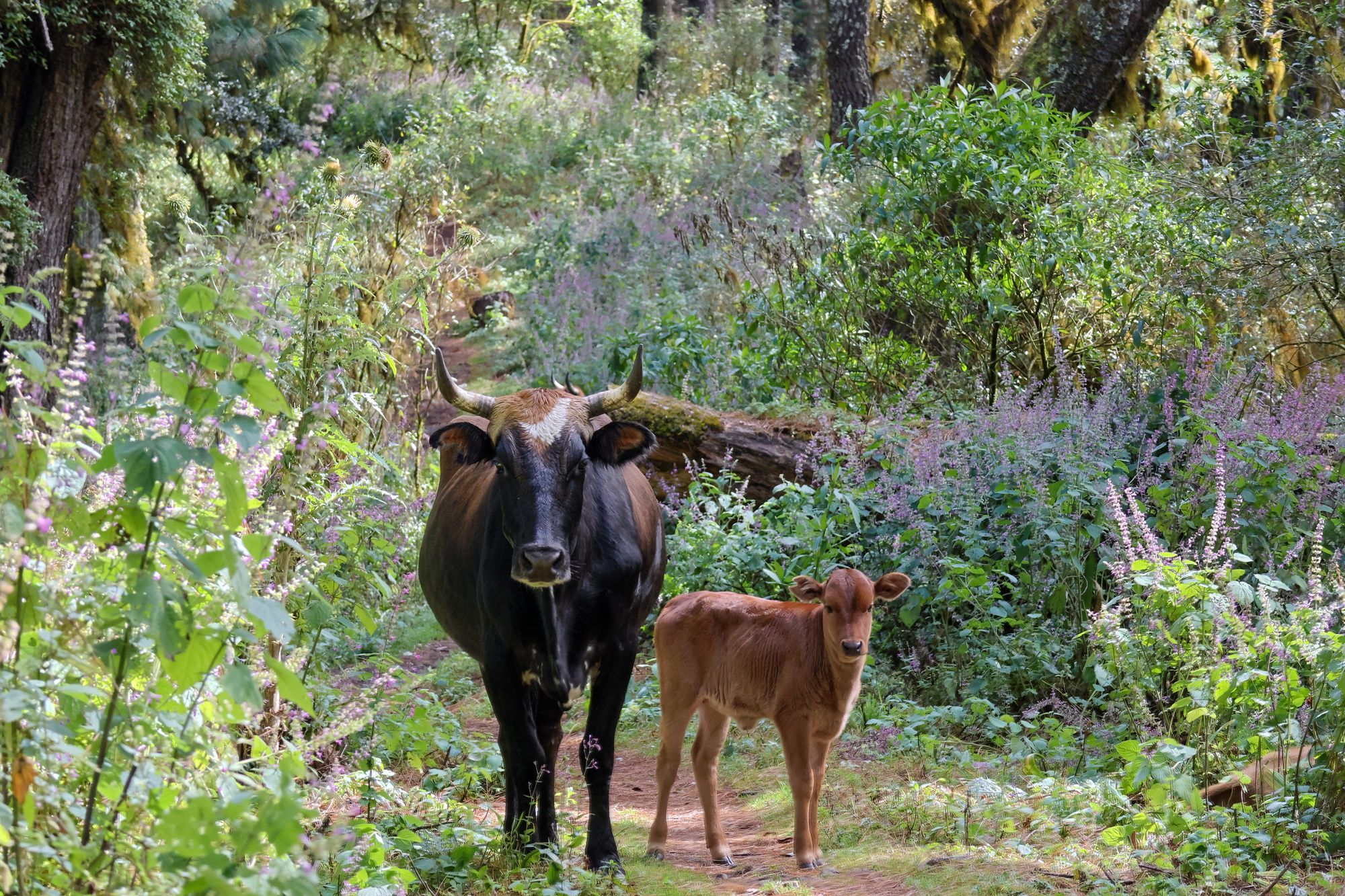

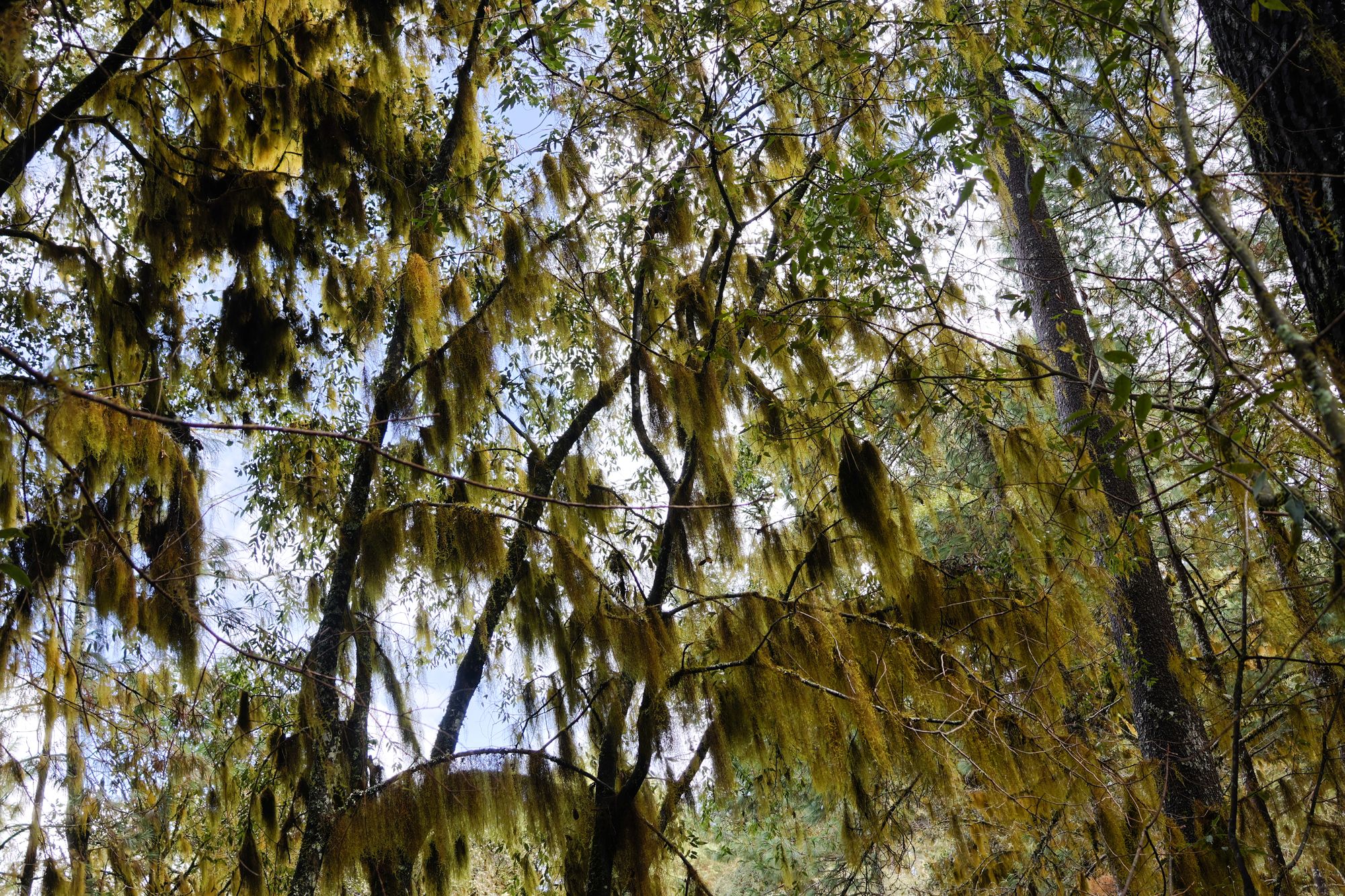
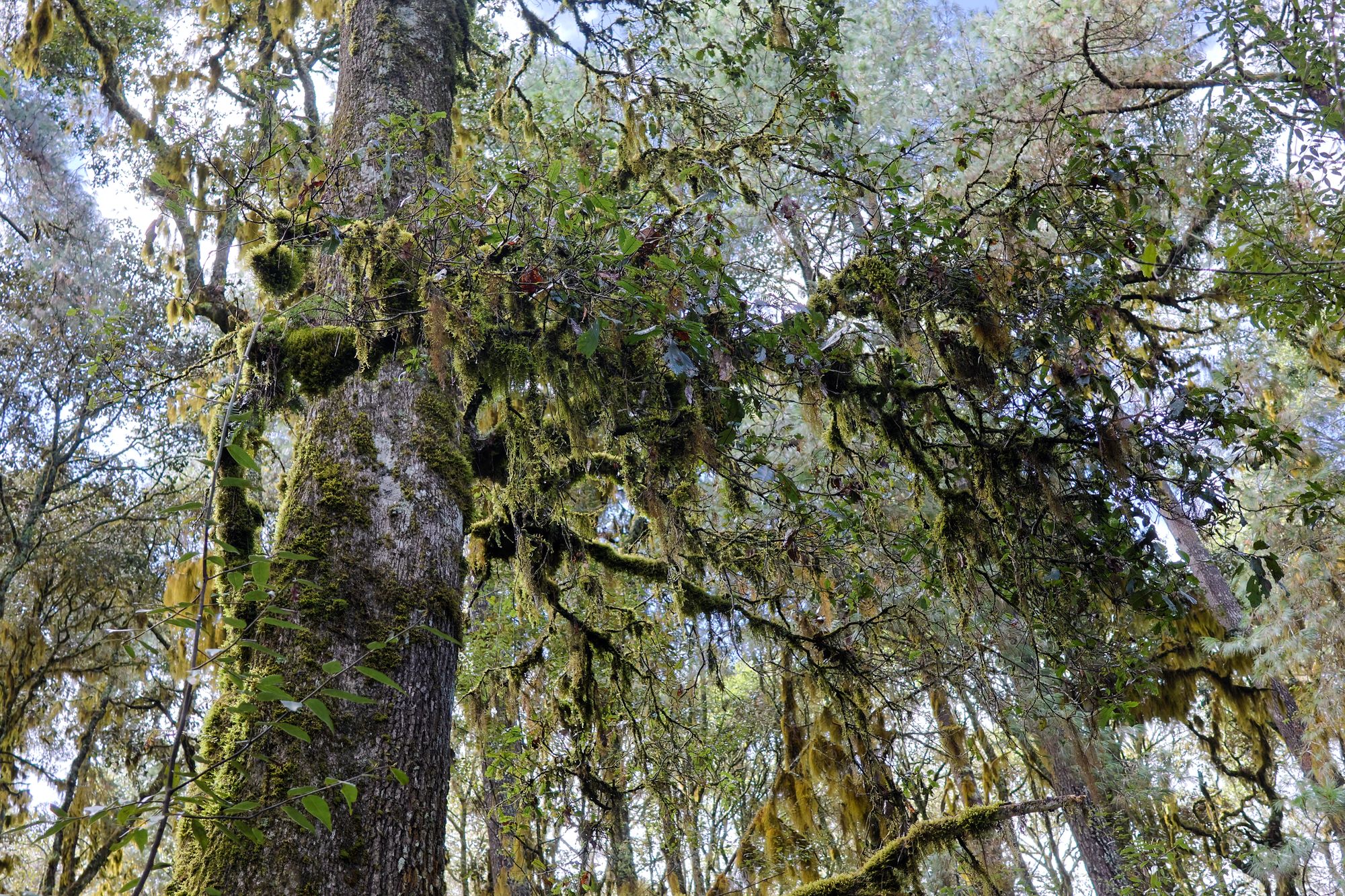
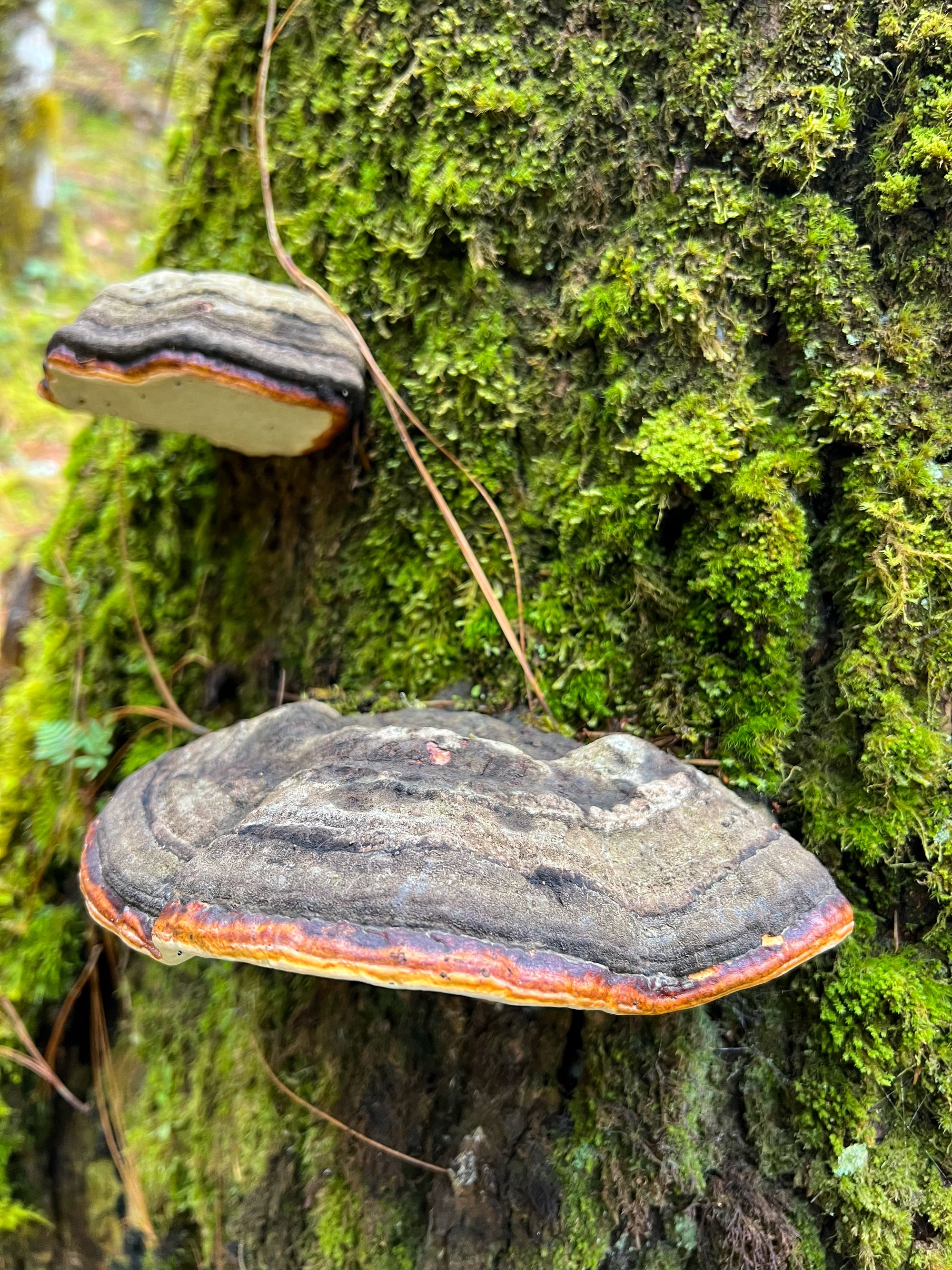
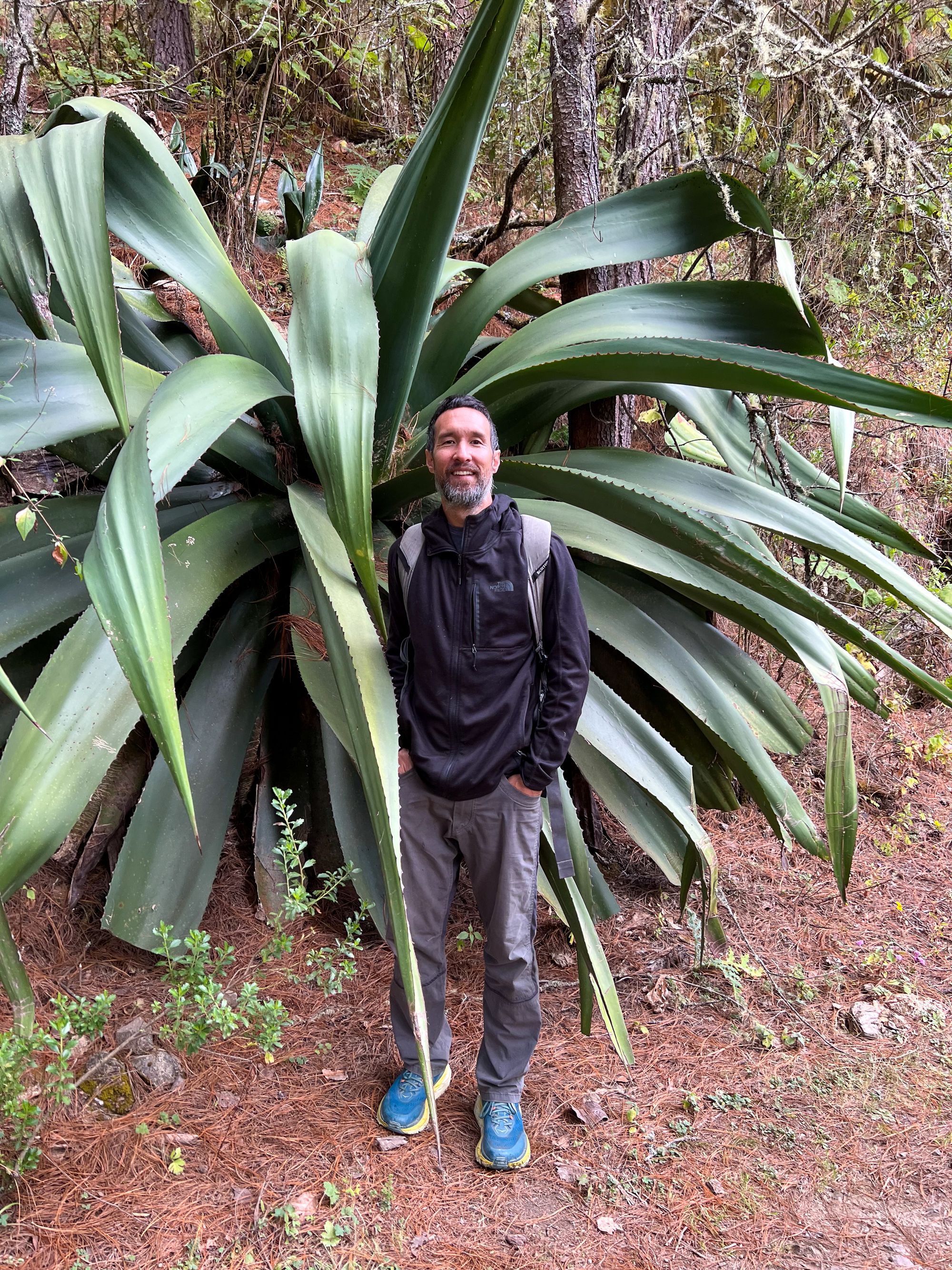
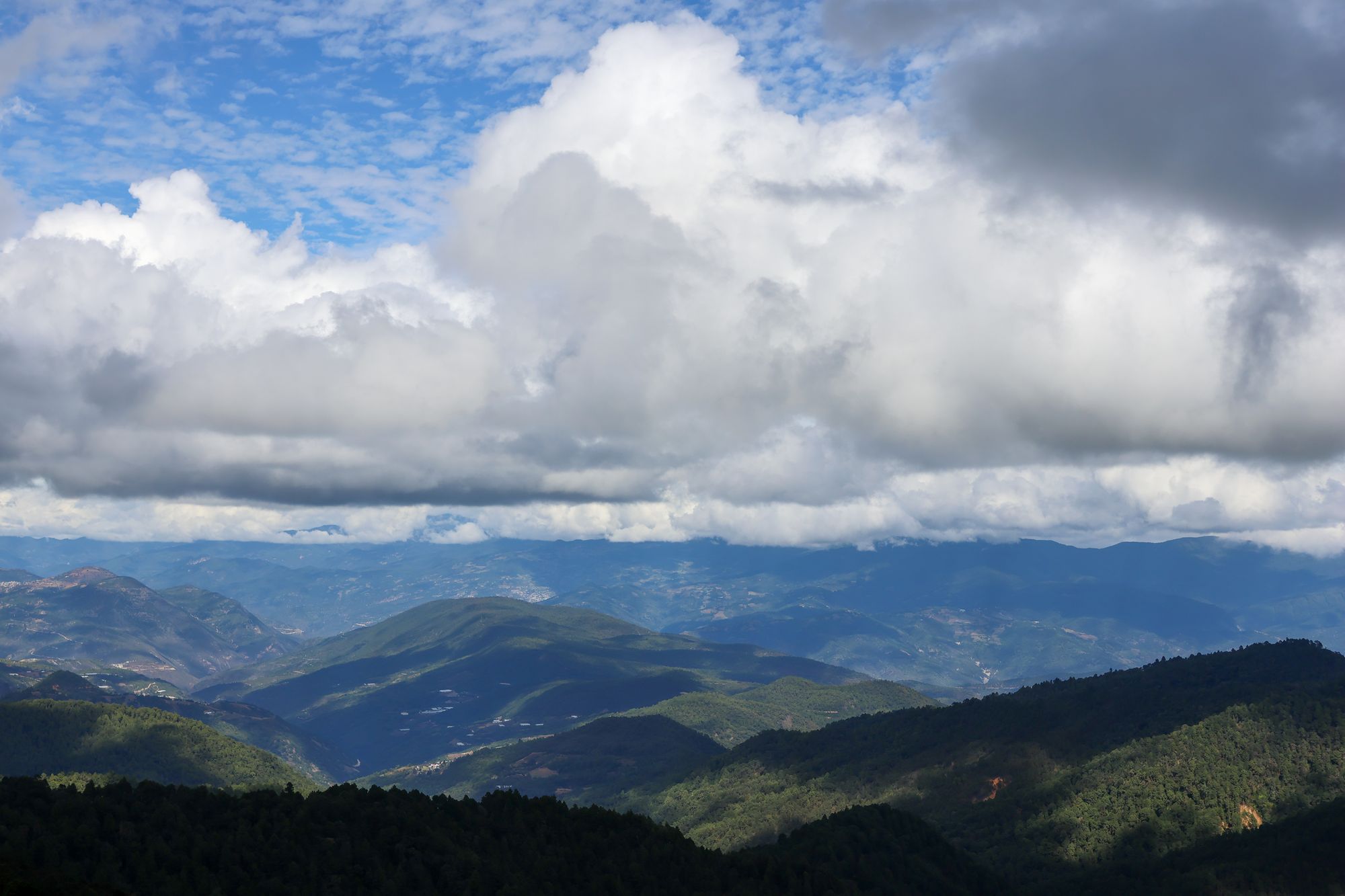
New Year's hike to the pilgrimage site El Picacho
The natural diversity around Oaxaca is truly amazing. For our New Year's activity, we chose a hike to the top of El Picacho near Teotitlan de Valle about half an hour's drive east of Oaxaca. The hike starts at a pretty reservoir where a variety of animals were grazing and is a consistently steep 2.8 miles up up up (Could be the sister to Picacho Peak in Santa Fe?). Unlike the mountains north of Oaxaca, this area is much drier and offers little shade. Drenched, we arrived at the top, where we were greeted by a little shrine. The pilgrimage up El Picacho usually takes place on May 3rd, for La Fiesta de las Cruzes, with the intention to seek protection for miners, masons, and construction workers, but relevance of this mountain goes back much further. In pre-Hispanic times it was used as a ceremonial site to pray for rain and fruitful crops. We made our way down again and back into the village to retrospectively pay the entrance fee at the local museum and to find some replenishing street food.
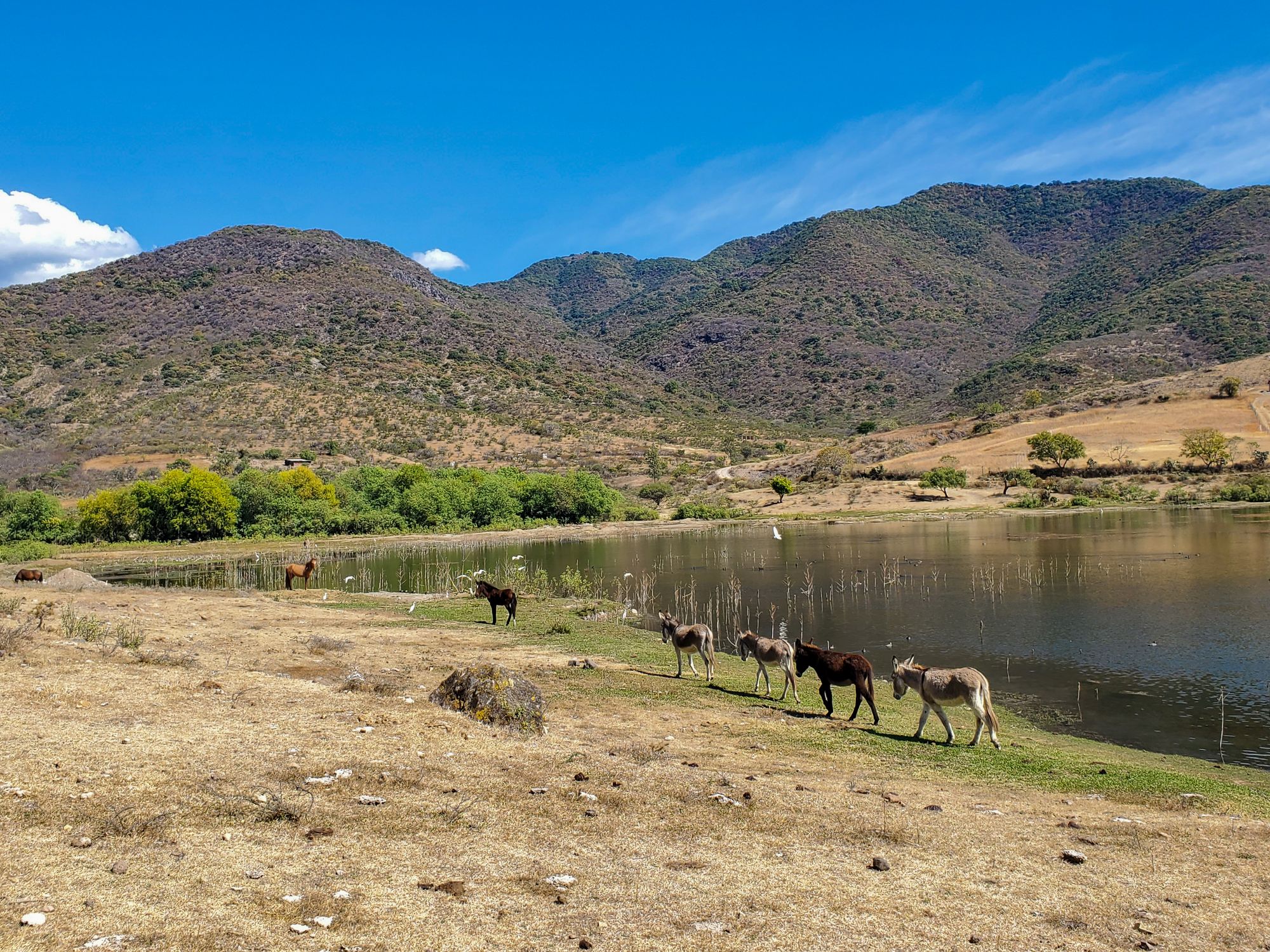
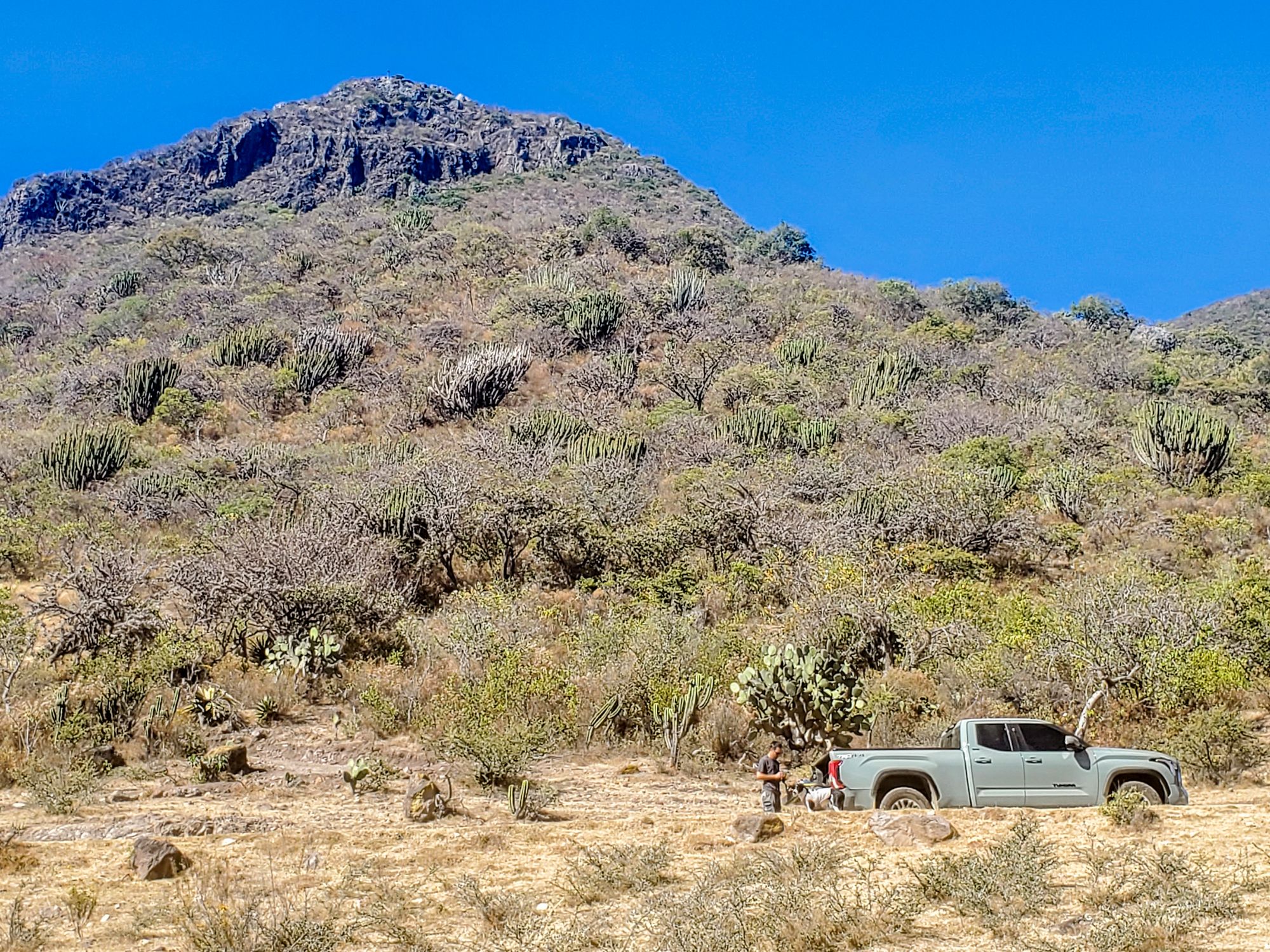
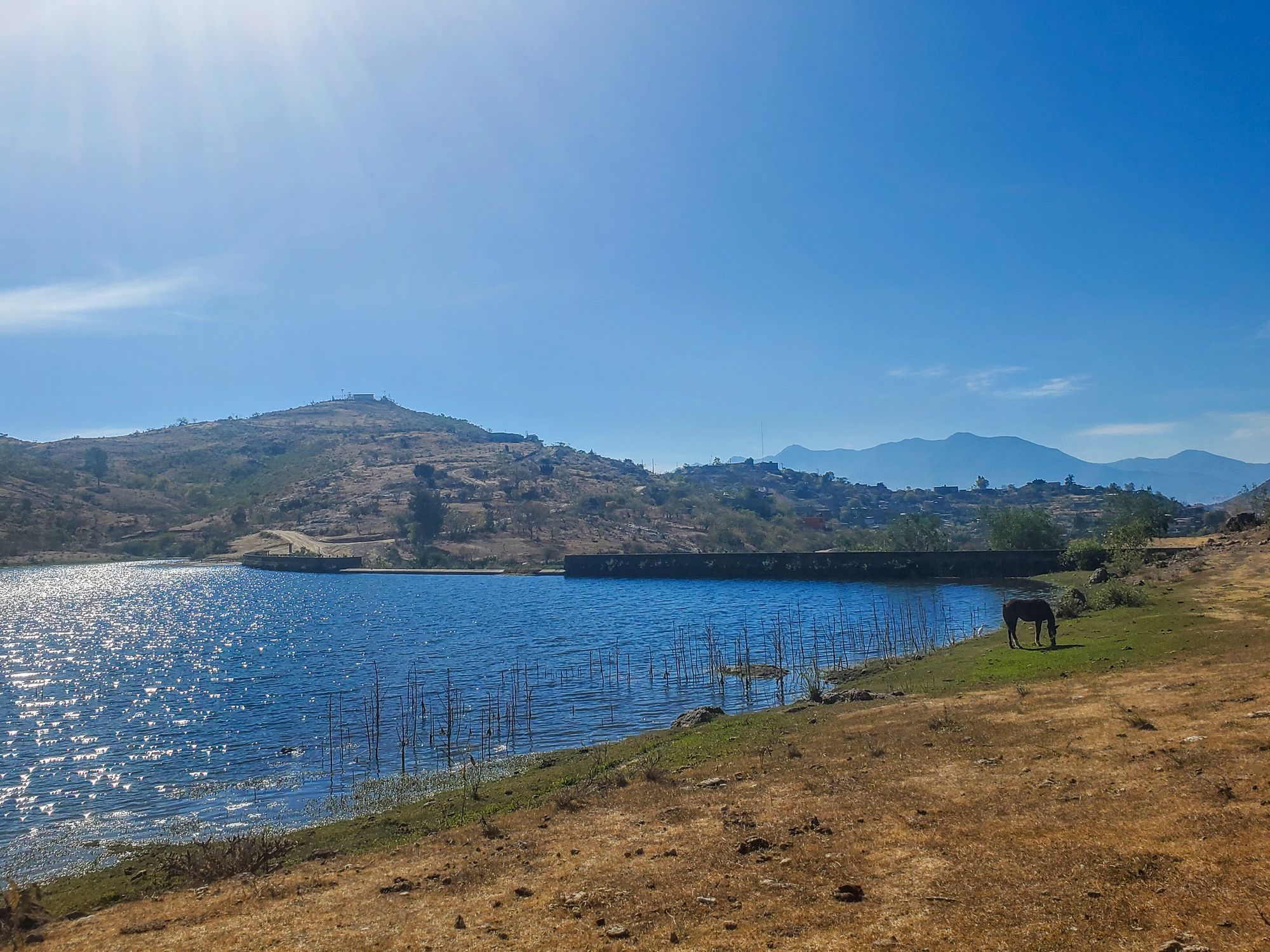
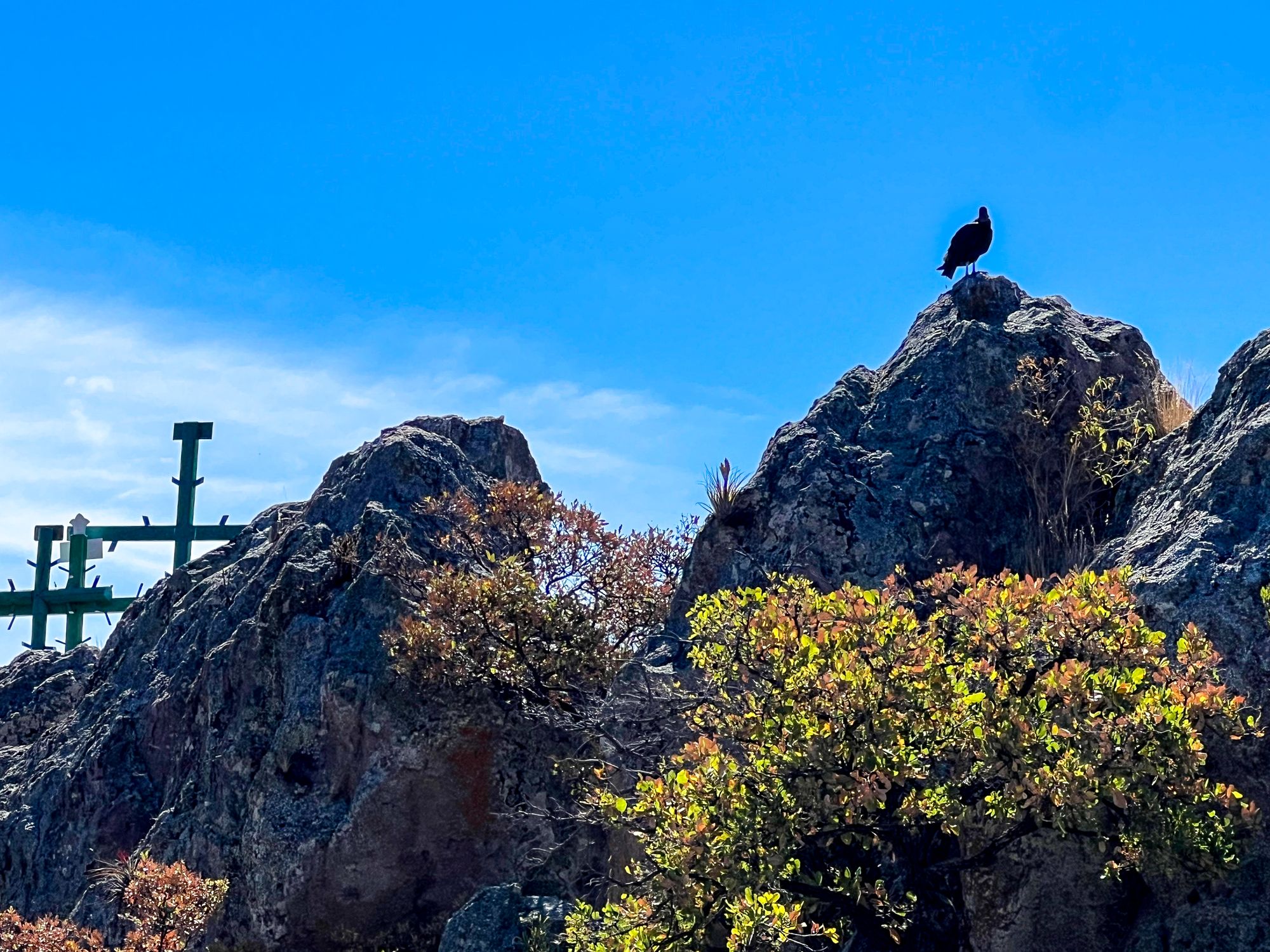
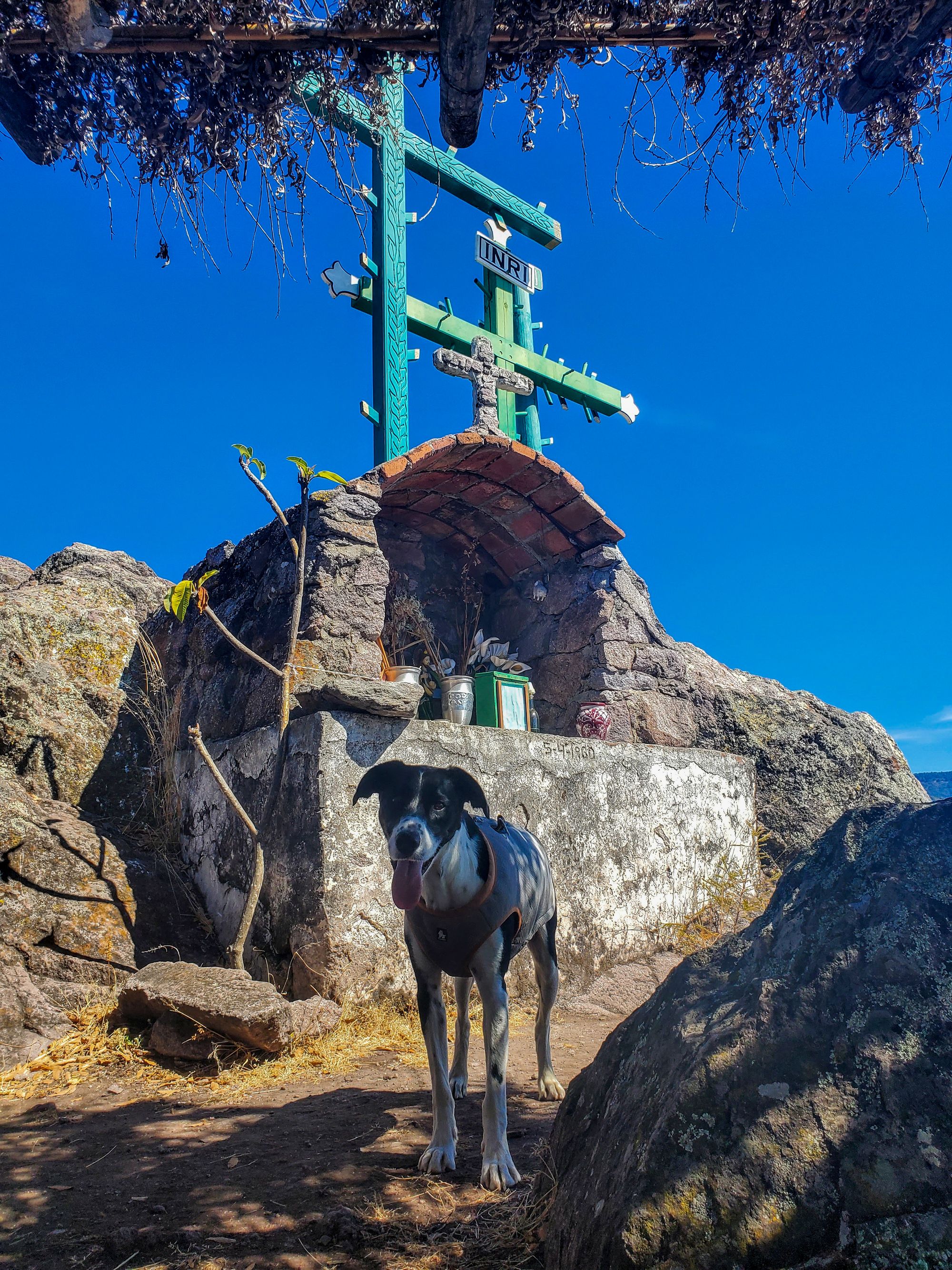
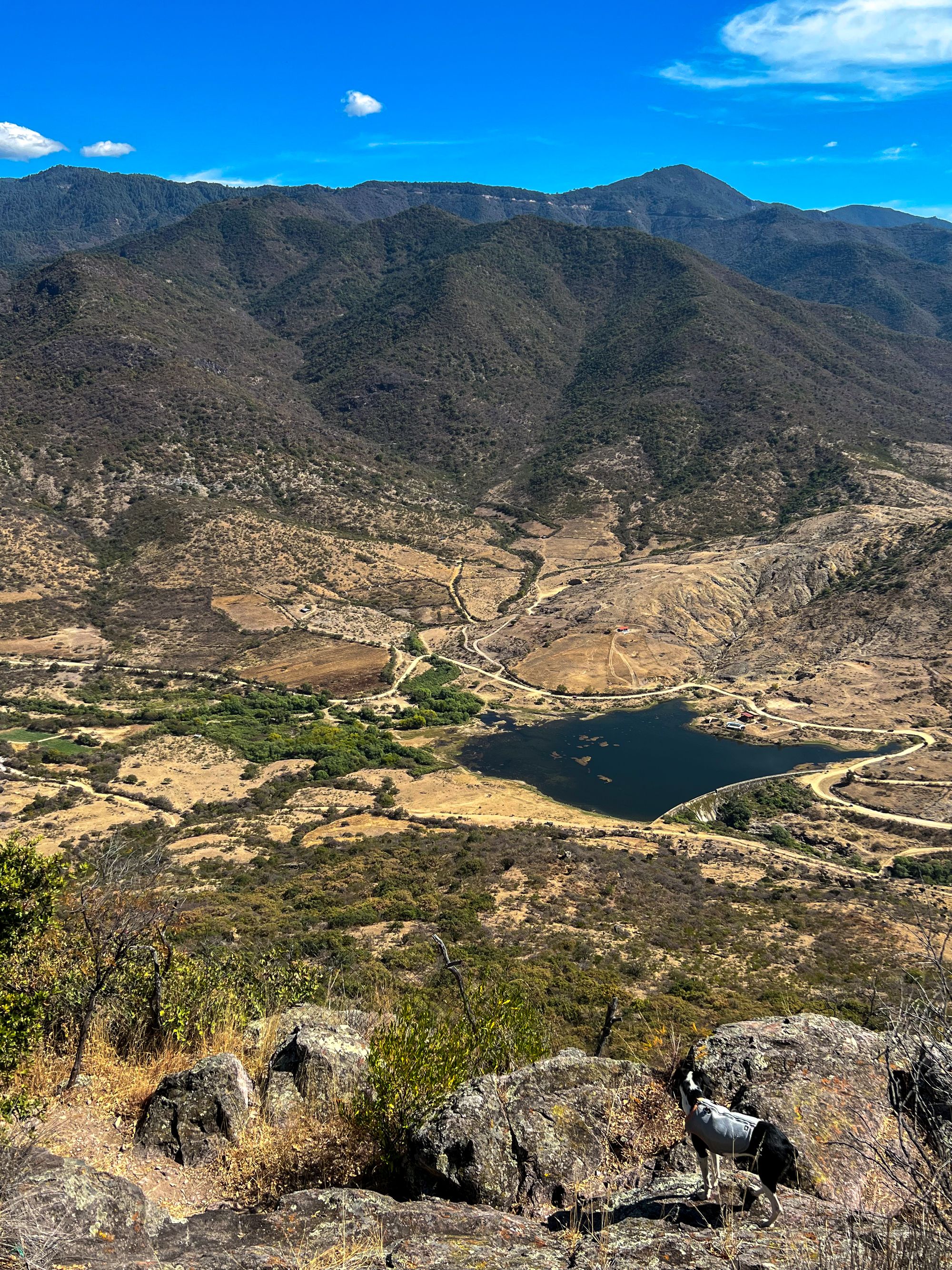
Bike rides around Oaxaca
Sadly we had been dragging both of our bikes around for several months now, with little opportunity to use them. Well, it was now or never and we couldn't bear the thought of driving all the way back without ever actually taking them from their rather expensive bike rack. Oaxaca is surprisingly bike friendly, and even though we didn't end up taking our bikes into town, there is a long bike lane on a median that goes from Tule, where we were staying, into the center of town. Situated in a valley and surrounded by mountains the city is the perfect base for all levels and kinds of mountain biking. Our first bike ride started at our campground and went with little elevation past some villages on the outskirts of Oaxaca to the pretty reservoir Presas de Santa Domingo. Overall 5.5. miles long it was an easy way back into using some almost forgotten muscles.
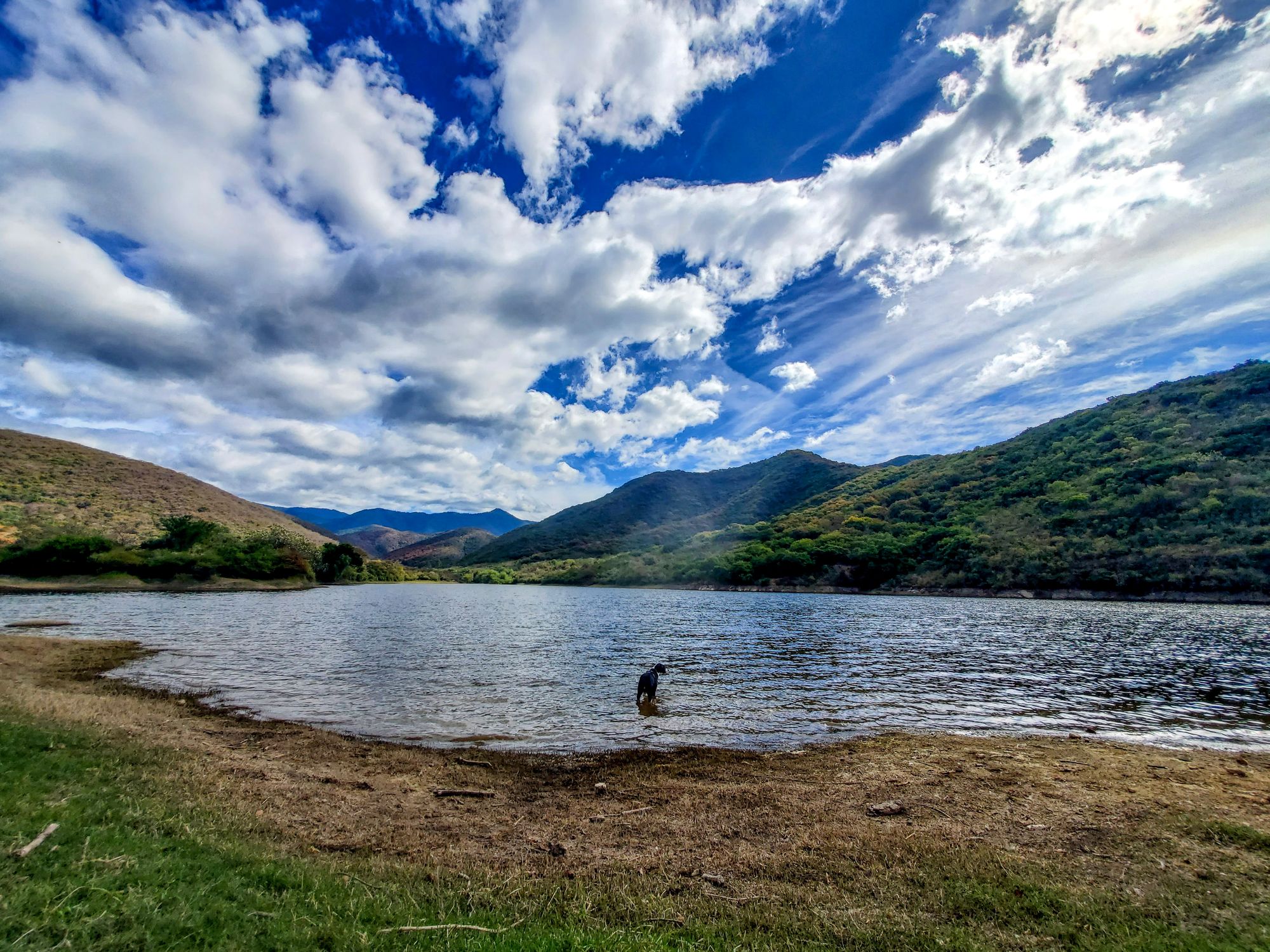
We also started our second, a slightly more advanced 9 mile bike ride at Tule and headed north through some villages towards the base of the mountains. The path Mil Rios passed by another reservoir and then ran parallel to a stream while making its way slowly up between two mountains. It got a little rugged in between and a few miles in it became fairly steep, but the trees provided some much needed shade and we even found wild Cherimoyas, also called custard apple and Hannah's favorite fruit, growing on trees.
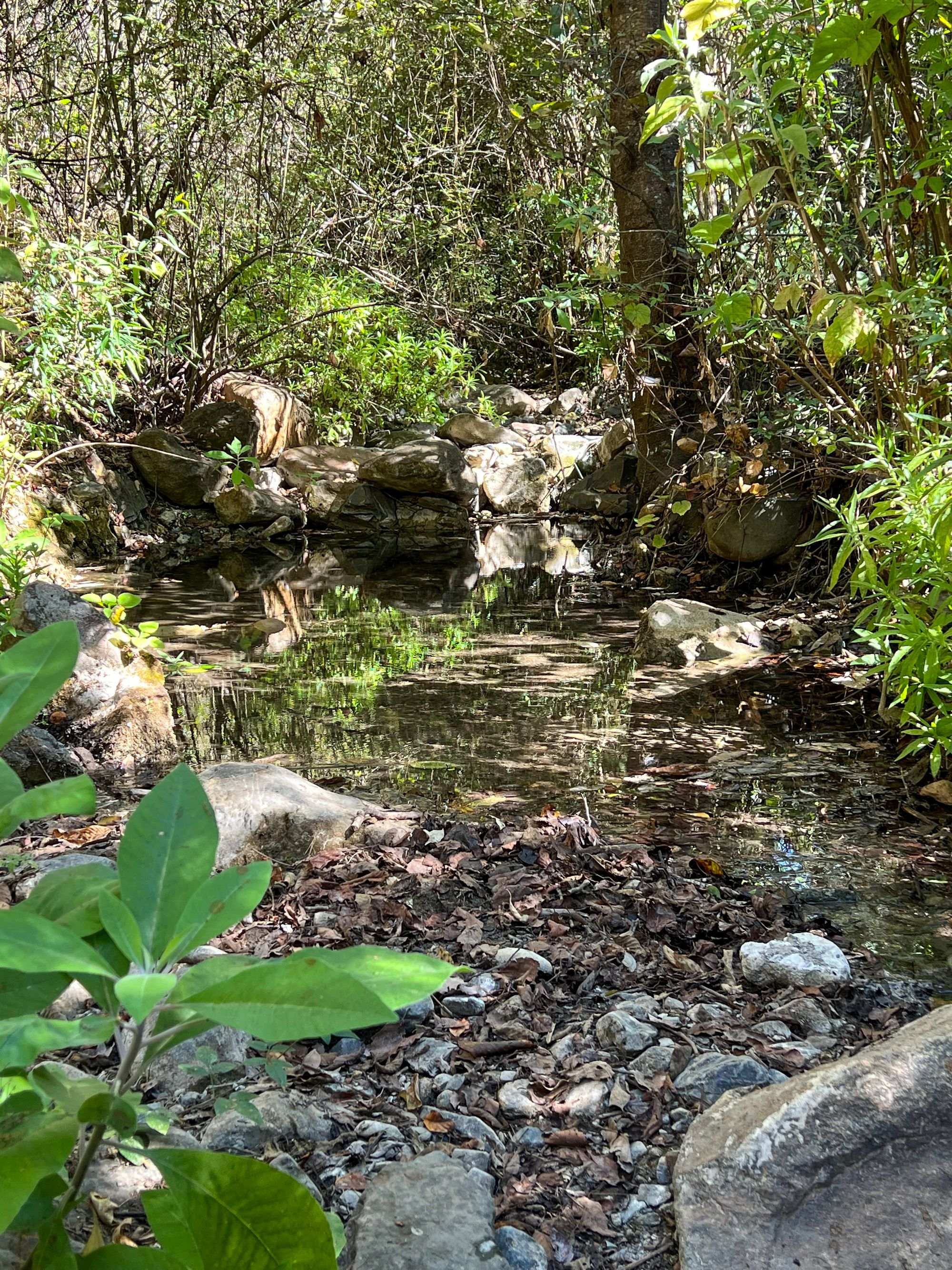

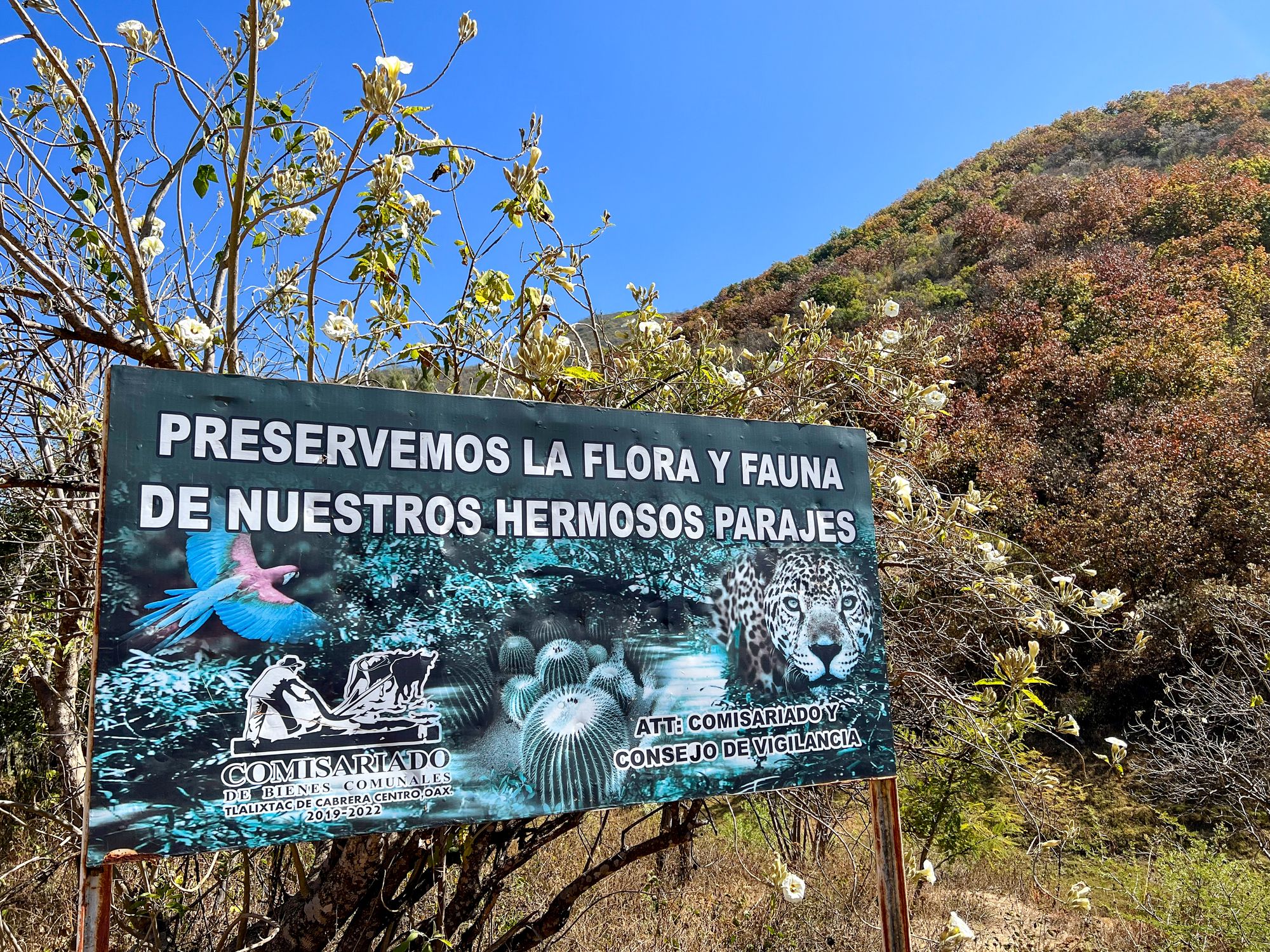
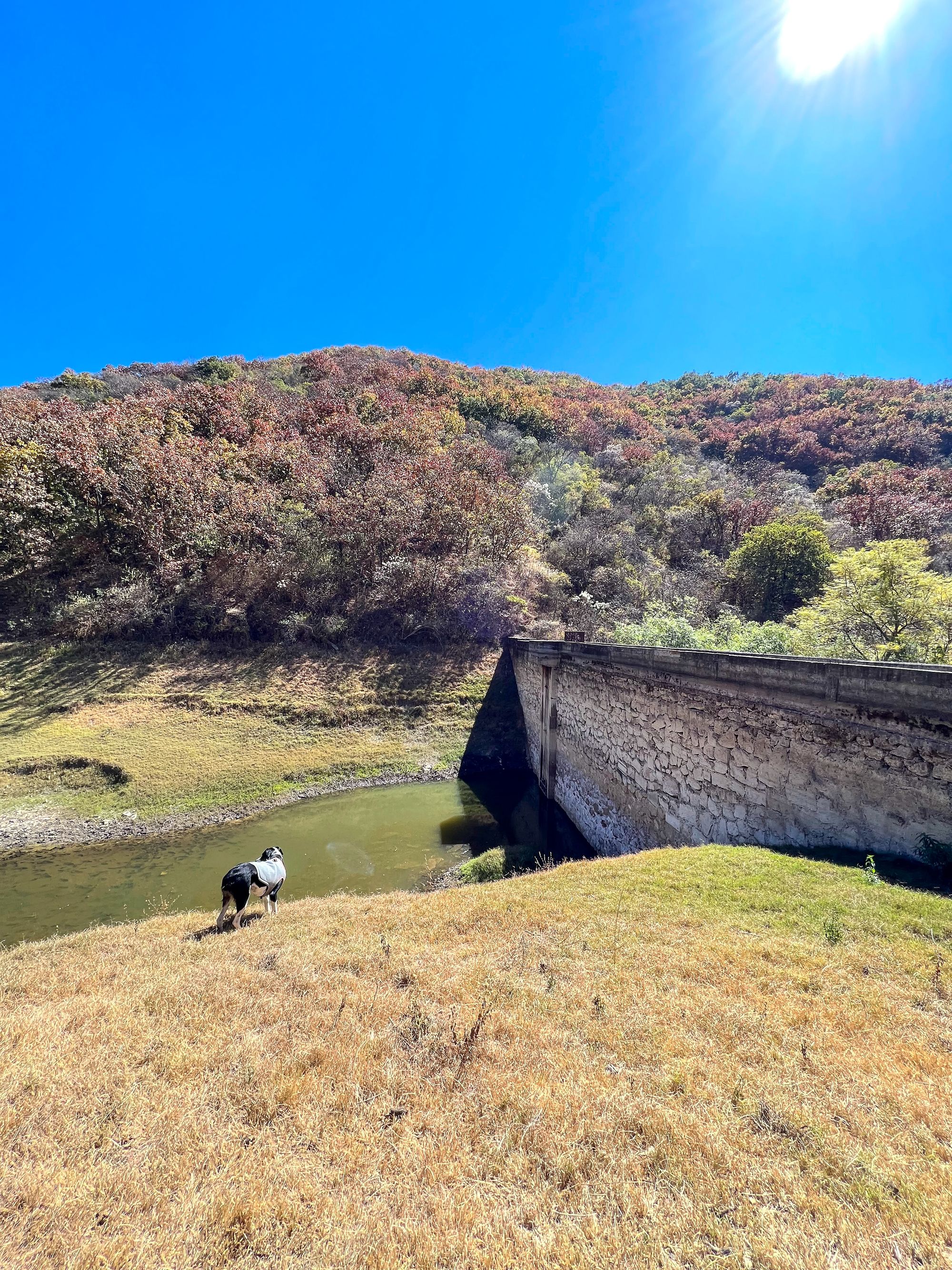
Hierve el Agua, frozen in time
The most memorable natural site we were lucky to experience in our three weeks in Oaxaca was the petrified waterfall Hierve el Agua. About 45 miles east of town, situated near San Lorenzo Albarradas, it is easily accessible by car or bus. Or bike if you are hardcore. We managed to get there fairly early in the morning, and were glad that we did, as the loop around the waterfall is not particularly long, but strenuous, especially on a hot day, and the pools tend to get much busier around lunchtime.
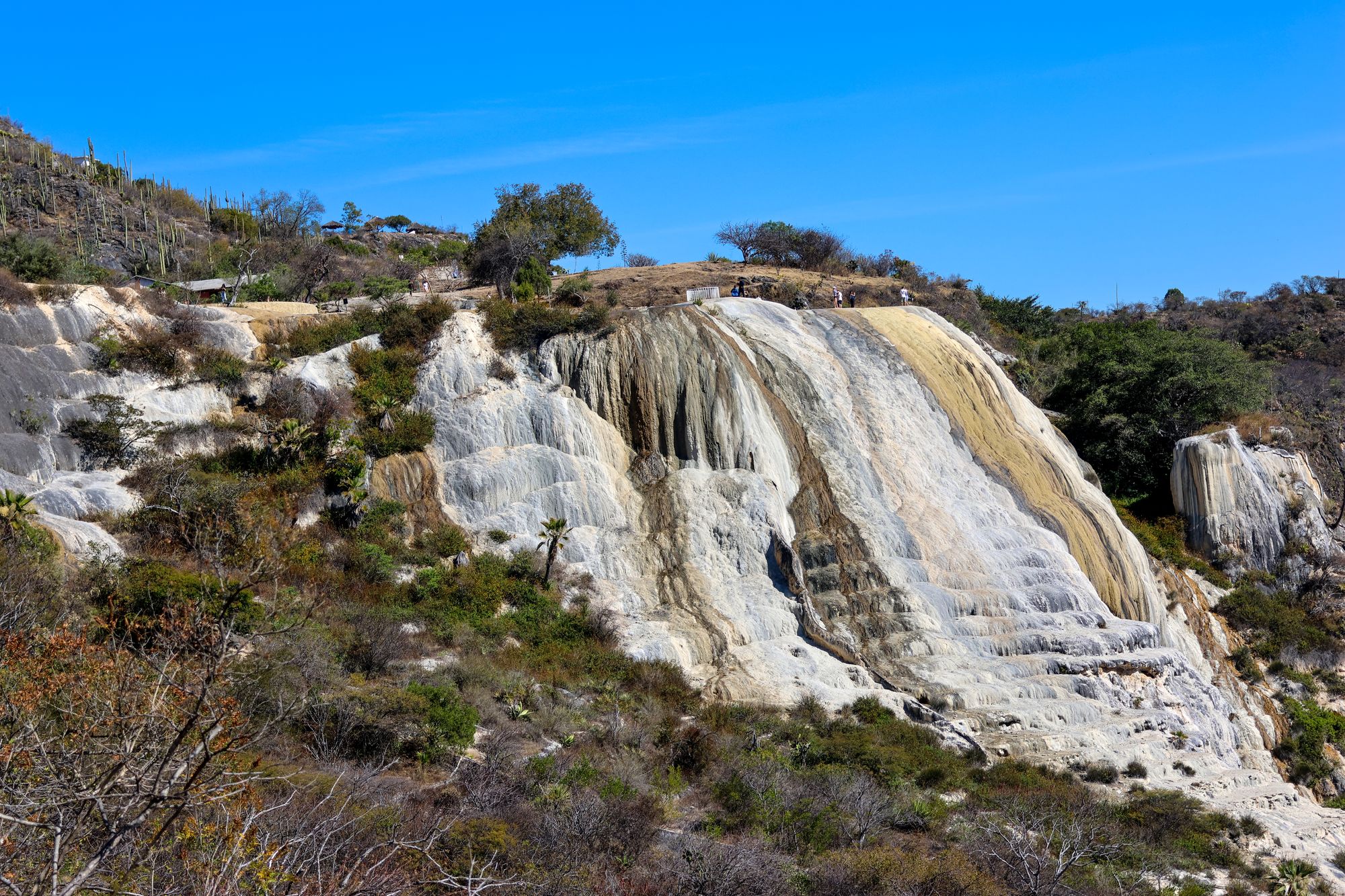
The 'waterfalls' are an extremely impressive site, and geologically Hierve el Agua is one of only a handful of travertine formations in the world. Unlike the travertine terraces of Pamukkale in Turkey and Mammoth Hot Springs in Yellowstone National Park, USA, Hierve el Agua looks like a cascading waterfall that has become frozen in time. Similar to the emergence of stalactites in caves, these formations are created when calcium carbonate rich fresh water seeps up from the ground and then deposits its minerals while slowly trickling over the edge. Besides its geological uniqueness, the site is also of archaeological interest, with its irrigating canals and terraces dating back as far as 2,500 years ago.
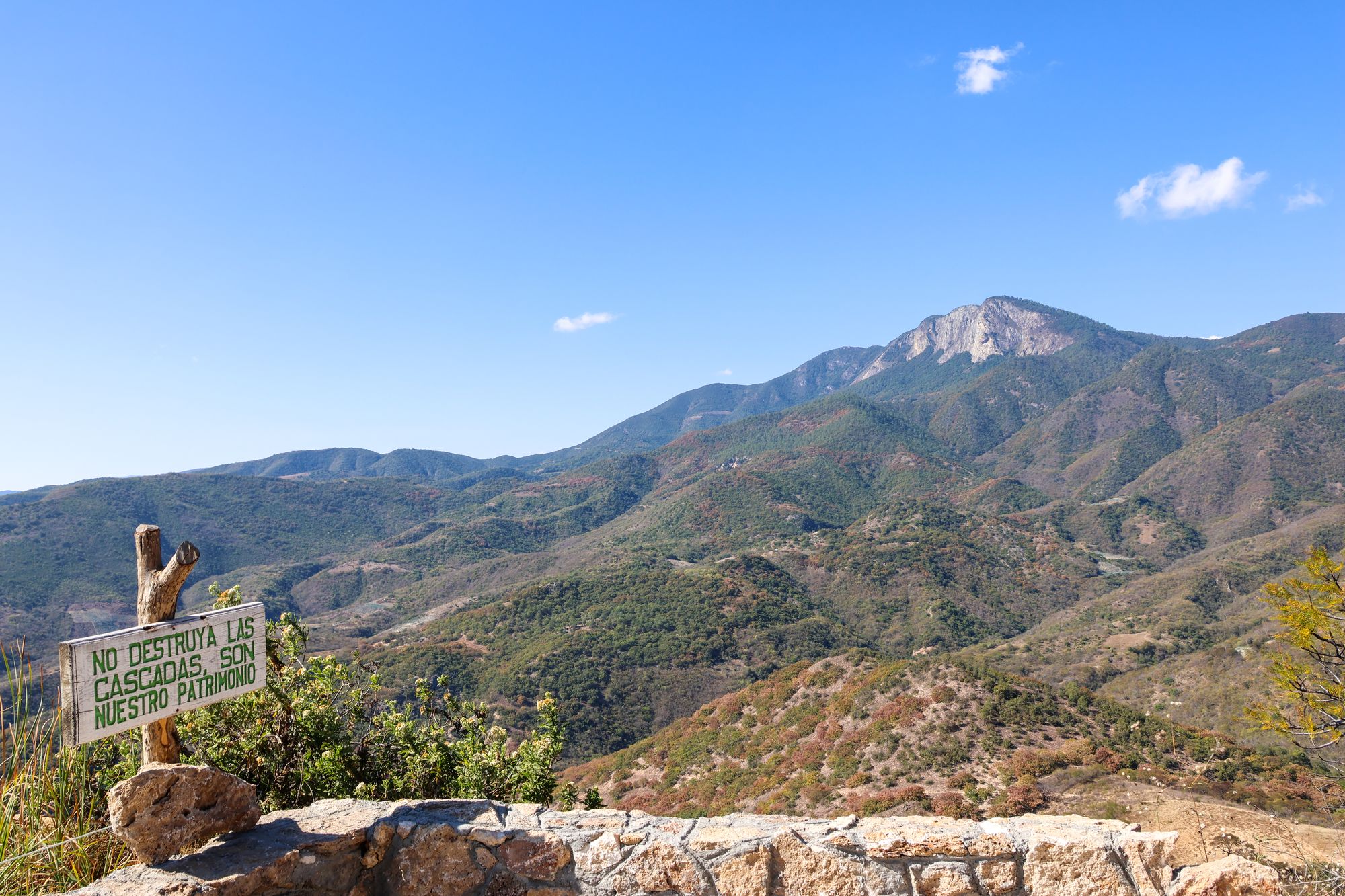
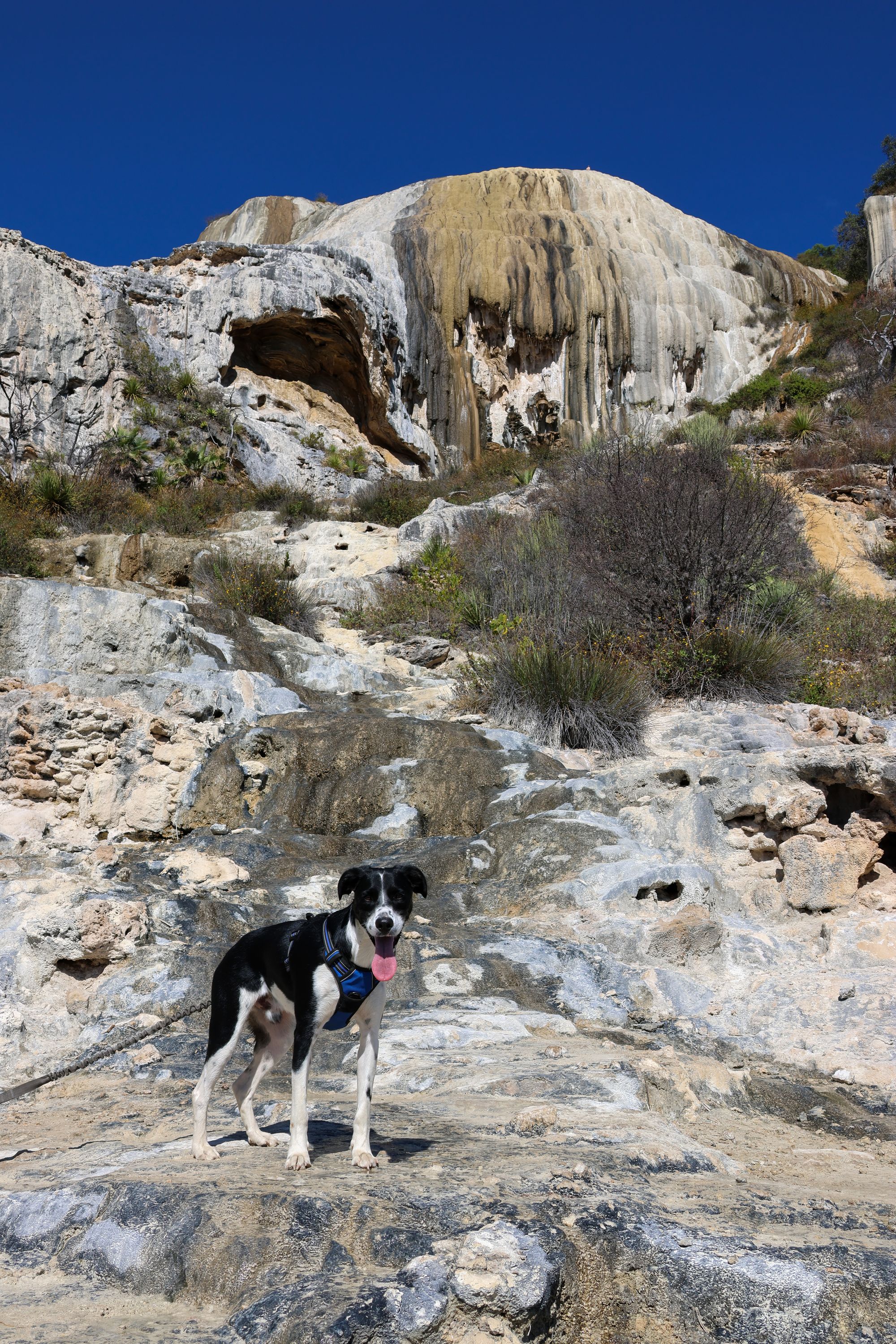
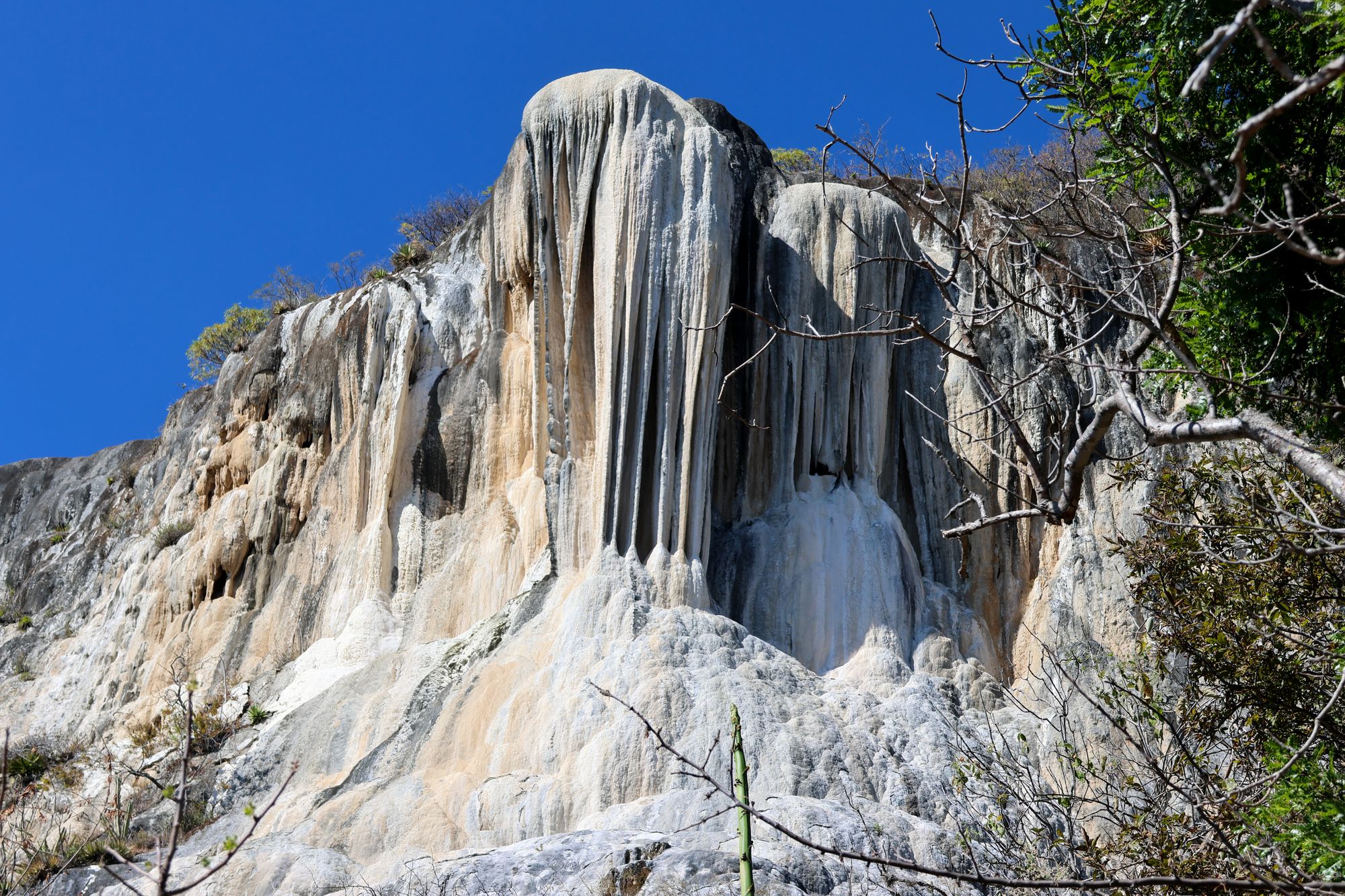


We only scratched the surface when it comes to all those beautiful areas that can be discovered, but we truly enjoyed our time in Oaxaca with its natural diversity, richness in art, food, and culture, all of which helped us recover and get our energy and motivation back. Chiapas and Yucatan were calling us, with their promise of wild camping, exotic wildlife, and ancient ruins. Stay tuned for our one day explorations of Palenque.

